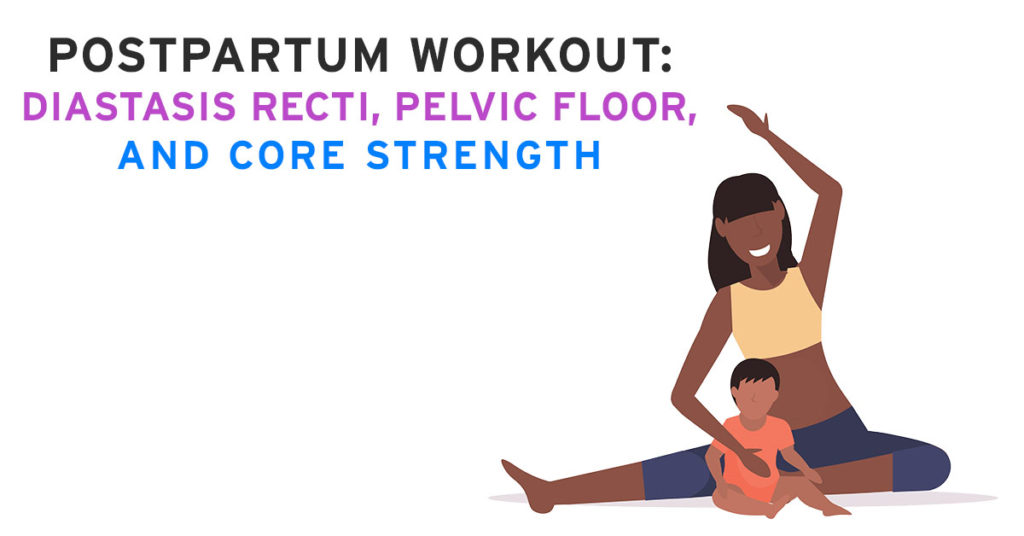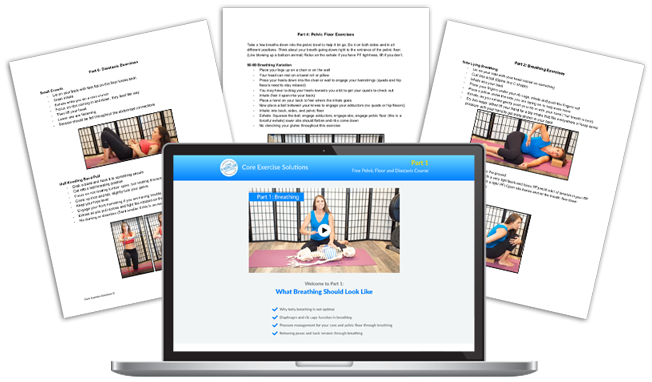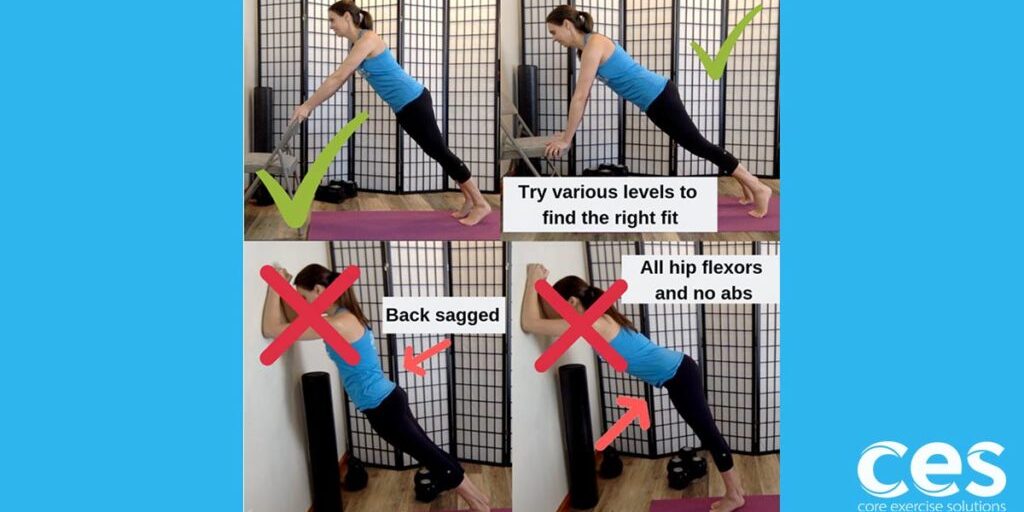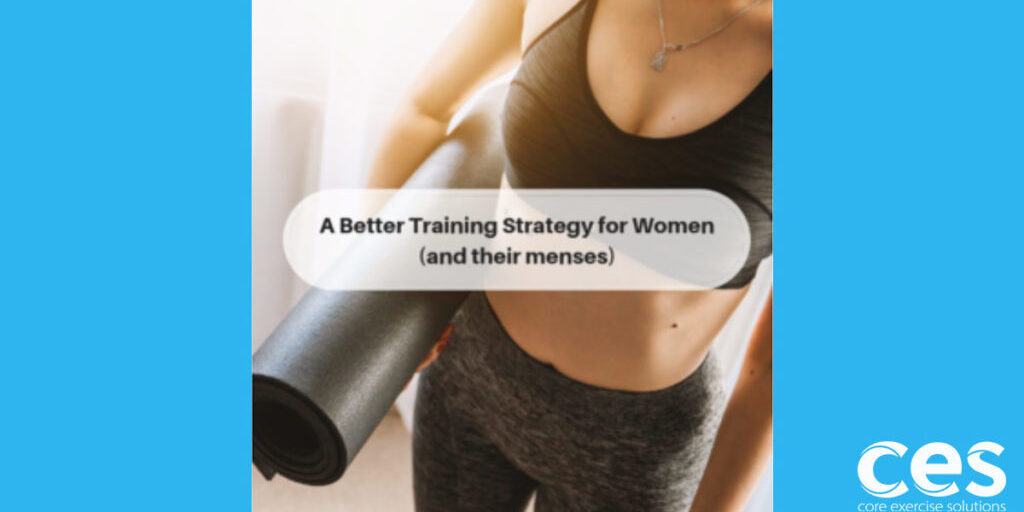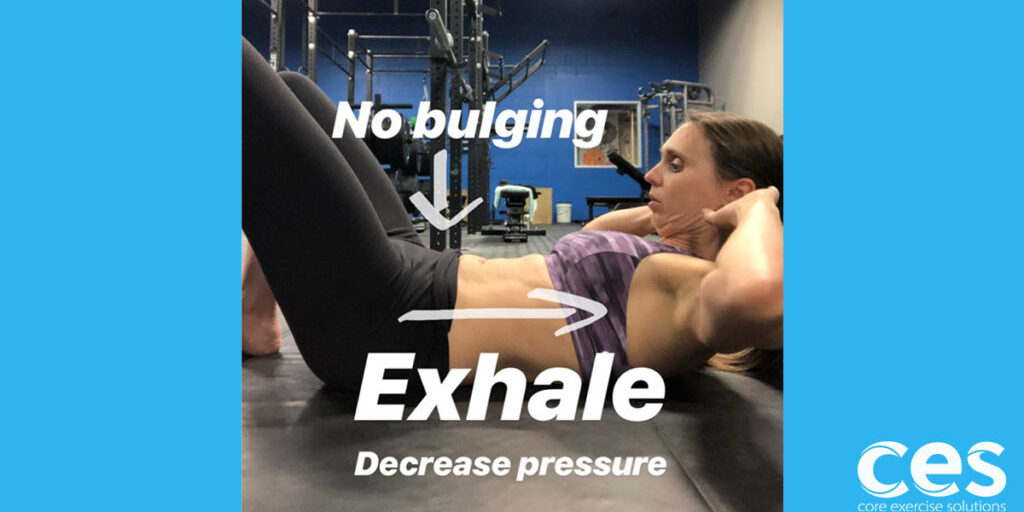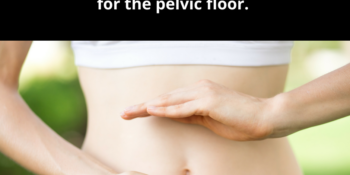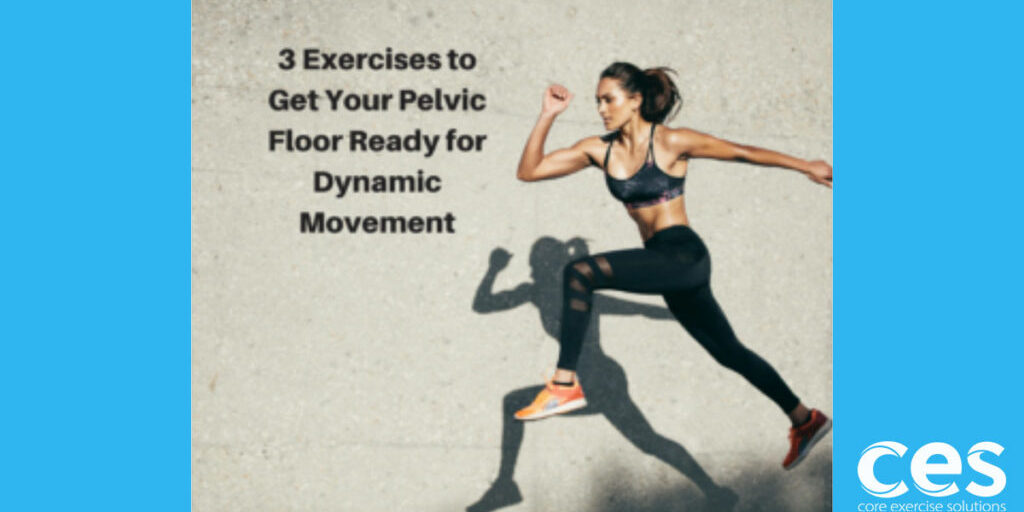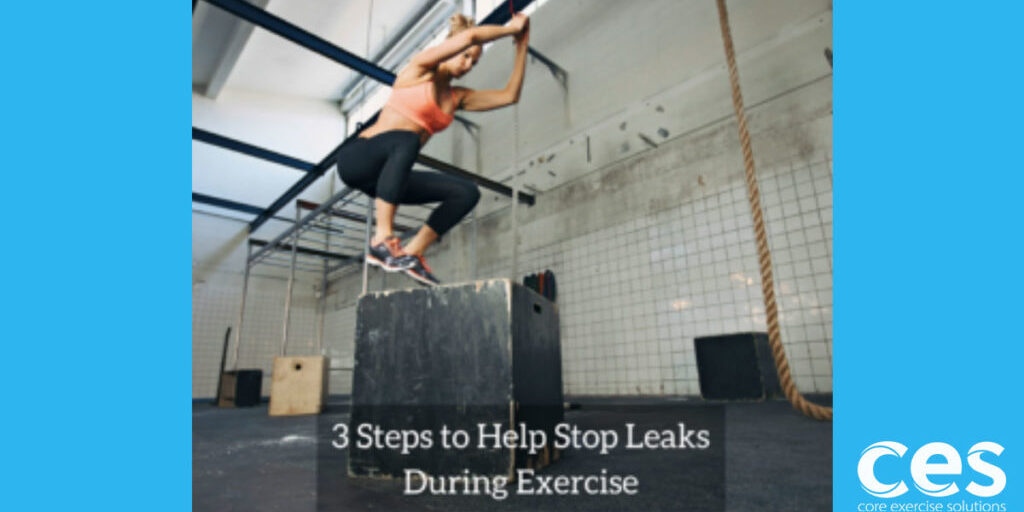Postpartum Workout: Diastasis Recti, Pelvic Floor and Core Strength
Do you have questions about your postpartum recovery? This postpartum workout article provides helpful information on diastasis recti, pelvic floor, and much more.
Having a baby can be hard on your body, and being pregnant for months and months can create changes that feel hard to overcome! The baby pushes up into your diaphragm and down into your pelvic floor. Your ribs spread, your pelvis spreads, your abs stretch out… this is a process for the body, and it can take time for these to improve.
In this article, I'm going to cover 3 easy exercises that can help your body recover from pregnancy. If you scroll down to the bottom, I’ve also answered a list of common postpartum questions, like “Do I need to do anything different from a normal exercise routine postpartum?” or “If I had a c-section, am I spared from pelvic floor issues?” and many more questions about postpartum recovery!
Risks Of Exercising Too Soon Postpartum?
The most common piece of advice often handed out at that 6 week checkup is to “go slow”. But what does go slow actually mean, and is it the best advice?
Those first 6-12 weeks postpartum are an especially vulnerable time for the core and pelvic floor. Women who overdo things during this time period increase their chances of both pelvic floor dysfunction and worsening diastasis recti. Your body just utilized the most stretched and opened position it could obtain to help accommodate a growing baby and delivery. Even if you had a c-section, the pelvic floor still adapted to prepare for delivery. Research shows us that women who had a vaginal delivery, especially an instrument-assisted delivery, have a significantly increased risk of pelvic organ prolapse over women who had a c-section. Likewise, research shows us that women who had a c-section have a higher risk of an unhealed diastasis postpartum. Both areas recover better with a little awareness and recovery planning!
Early on in the postpartum period is when you want to use the most caution, because the core and pelvic floor are healing from pregnancy and delivery. That’s why it’s important to start with restorative core and pelvic floor work that incorporates breathing and body awareness in the beginning before hopping back into your usual exercise routine.
What Exercises Postpartum will Prevent my Body from Healing?
Your intuition has you searching for answers, and you’re right; there are specific exercises to help promote faster healing! There are also exercises that will not be a good fit because they can cause issues like diastasis recti to worsen.
In a general sense, exercises that place a high demand on the body and increase intra-abdominal pressure are the most likely to risk damage and prevent healing. The issue with this advice is that every woman is different. For some, push-ups may dramatically increase pressure on the core and pelvic floor, making it an exercise that worsens diastasis recti. But other women may have a great core response, and push-ups may actually become an exercise that will help. Some women can ramp up demand fast and have a great response, while for others this high demand makes things worse. Before we dive into more about a diastasis, check out the video below to understand what intra-abdominal pressure is.
One of the most important things to do postpartum is manage intra-abdominal pressure. Nothing helps more for prevention and recovery!
Why do I Need to do Anything Special or Different from a Normal Exercise Routine Postpartum?
Your body is supposed to bounce back after the baby, right? Well, not so fast. Let’s look at a few reasons why we need specific exercises to help recover from pregnancy and childbirth.
A couple of key factors go into “bouncing back naturally,” and one of them is chairs. That's right, we sit too much in chairs instead of squatting. This seems like such a small thing -- but the lack of deep squatting as a whole in our society changes how the muscles in the pelvis coordinate and work. The way we move in our day-to-day lives has changed dramatically from the more natural positions that would help promote faster healing.
Let’s work through 3 simple exercises for areas of the body that help promote postpartum healing.
#1 Strengthen Your Glutes
Deep squatting helps improve femur positioning in the hip socket, and activates the glute max which is not only your powerhouse for strength but also helps kick your pelvic floor back into action. A strong glute max also prevents mom butt! I say this jokingly, but it’s really something that I noticed personally as well as in lots of other women. Due to the postural changes during pregnancy, it can be really challenging to maintain glute max strength. Decreased glute max strength is associated with knee, hip and low back pain. It's an issue that is best prevented before nagging orthopedic issues like back pain follow. In other words, we need glutes!
When we don’t utilize a full squat regularly, going into a full squat can be very hard on the pelvic floor and actually cause too much pressure. If it’s a position your body uses regularly, it doesn’t seem to have these negative pressure effects. “Regularly” being the key word.
A full squat can also promote diastasis healing, because it improves back mobility and diaphragm movement which go hand-in-hand with improving core strength.
If you notice back pain, increased pelvic floor pressure or any other uncomfortable sensations, you can start with a modified full squat. It’s better to ease the body into positions rather than force it.
Another area we want to address with the hips is bending over. Everything we do as a mom is hunching forward. It’s hard on our backs! Changing tables are low, cribs are low, car seats are low and awkward -- so many things we do with our kids require bending over. Most new moms are not serious weight lifters, so learning how to do a proper hip hinge is a must postpartum!
The angle our pelvis takes on to accommodate the baby makes it difficult for the glutes to fire. Most new mom clients I see lack glute strength. To build your glute strength back up, it’s helpful to start using them every time you bend over to pick up your precious little one or just all the toys scattered across the floor. That's why you need to learn a proper hip hinge and build deadlift strength.
After deep squatting and learning a hip hinge, my 3rd tip for building glute strength naturally is to stop clenching, and learn how to eccentrically lengthen your glutes when you bend forward.
Quick Back Saving Tip:
Alternate the side where you carry the baby or carrier as much as possible. Always carrying on one side can cause muscle imbalances that can lead to future neck, shoulder and back pain, as well as pelvic floor dysfunction. The same goes for your heavy purse, too!
#2 Optimize Pelvic Floor Function (This helps restore core strength!)
Your pelvic floor strength can be affected by pregnancy even if you didn’t have a vaginal delivery, because the extra weight of the baby pushing down on the pelvic floor can cause issues. As your pelvis spreads to accommodate the baby, the bones of your pelvis move. This change can affect the function of the pelvic floor. Proper diaphragm function, as well as alignment and deep squatting, all go a long way toward strengthening the pelvic floor. It's more than just doing kegels. Sometimes women actually need to do fewer kegels to improve. Alignment issues, diaphragm function, hip and core strength all play a role in having a strong pelvic floor.
If you have any tightness or higher tone in the pelvic floor, this can increase pressure on your midline and prevent diastasis healing. Pressure needs to be able to go everywhere, and pelvic floor tightness prevents pressure from going down. The core and pelvic floor work together for optimal function. Both weakness and tightness in the pelvic floor can contribute to a weaker core response.
#3 Deep Breathing (Diaphragm Function)
Deep breathing with proper diaphragm expansion makes your whole body happy. It relieves neck and back tension, but most importantly, it engages the pelvic floor and helps close your diastasis.
When you take a deep inhale, focus on the ribs expanding out -- 360 degrees -- around your entire rib cage. As they expand out, feel the pressure from the diaphragm push down into your pelvic floor. (Try sitting on an exercise ball for added feedback.) This pressure down says: "Hey, pelvic floor! You need to turn on and work!"
When you exhale, your ribs should come back down and in. In most of my clients with diastasis, their ribs are stuck in a flared out position. Deep breathing and getting a complete exhale can really help with this.
Frequently Asked Questions from Postpartum Clients
What Exercises Postpartum will Prevent my Body From Healing?
- Too much too soon. It's important to pay attention to the little signals of things not feeling right as you ease into more difficult exercise.
- Front planks, crunches, sit-ups, leg lifts, push-ups, Pilates 100s, V-sits. Basically, anything that puts too much pressure on the front abdominal muscle (rectus abdominis) can cause your diastasis recti to get worse in the beginning. You need to work your way into a high demand to handle it well.
- Anything too dynamic, or exercises that increase pressure before your pelvic floor heals: jumping jacks, running, heavy lifting, etc. Dynamic or hard activity before the pelvic floor fully heals can increase risk of a prolapse, and nobody wants that! Running can be amazing for the pelvic floor. You just need to be ready for it.
This advice is for the early days postpartum. Hard, dynamic exercise can be part of the healing process, but it’s usually not the best fit right at the beginning.
Kegels And The Pelvic Floor
Can't I just do kegels at stop lights and call it a day?
First of all, good for you for knowing what a kegel is! A quarter of my clients have never heard of that exercise. (It's the drawing up of the pelvic floor muscles. It feels like you are trying to prevent the passing of gas or urine.) The answer is no, you can't just do kegels. They are a good exercise and you need a strong pelvic floor, but sometimes the issue has more to do with timing. Someone may have a strong pelvic floor, but when they jump up and down or sneeze, their pelvic floor does not respond automatically. Sneezes do not wait for you to consciously hold in your pelvic floor, nor does that spontaneous laugh that feels so good. Pelvic floor firing is dynamic and interactive with the body, so there is more to it than just strengthening. Lastly, I often see an issue with women doing kegels incorrectly. Sometimes exercises are not as simple as they seem.
What is a diastasis recti?
A diastasis recti is when the two sides of the center abdominal muscle, the rectus abdominis, spread apart due to a thinning of the linea alba (connective tissue in the middle). The condition is measured by lying on your back with bent knees and doing a curl up. If you have more than a two finger width gap above or below the belly button on the linea alba, it is a positive indication of a diastasis recti. Depth is also an important factor in determining if you have diastasis recti and if your deep core muscles are functioning properly.
What can I do to help my diastasis heal?
Some professionals recommend wrapping or supporting the diastasis for the first few weeks postpartum (Belly Binding: Is it good?), but the biggest help is fixing your posture and getting your diaphragm working properly. With correct, supportive posture, your deep core muscles will take all the stress off the diastasis and allow it to heal properly. You also need to be careful with abdominal work postpartum. Exercises like front planks, crunches, and leg lifts can make a diastasis recti worse if done too soon. Don't rush into a difficult exercise program right away! Your body just went through a huge change, and it needs time to heal properly.
Here is an article on How to Heal a Diastasis Recti Without Surgery for you to read more if you are interested.
Working with pregnant and postpartum clients/patients?
This 6-part course offers key takeaways on breathing, pelvic floor strengthening and diastasis recovery. Sign up and start learning today!
Free Pelvic Floor Educational Series
Dr. Sarah Duvall, PT, DPT, CPT and the CES Team have helped thousands of women create the strength and stability needed to overcome common and not-so-common pelvic floor issues.
Join us today for this 4-part Pelvic Floor Video Series, absolutely free.
We don't spam or give your information to any third parties. View our Terms of Use and Privacy Policy.
Having trouble signing up? Click here


